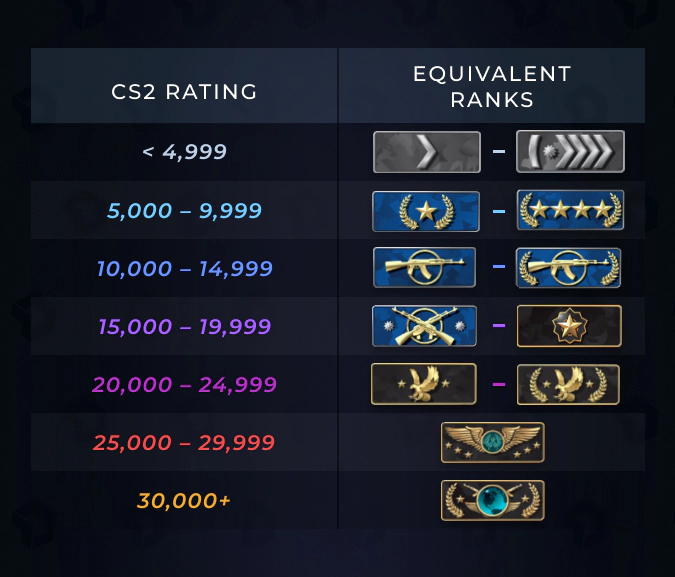Insightful Updates
Stay informed with the latest news and trends.
Ranking the Ranks: Decoding CS2 Matchmaking Mayhem
Unravel the chaos of CS2 matchmaking! Discover tips, tricks, and rankings to elevate your game in our ultimate guide.
Understanding CS2 Matchmaking: How Ranks Affect Your Gameplay
In the landscape of CS2 matchmaking, understanding how ranks function is crucial for improving your gameplay experience. Ranks are assigned based on your performance in competitive matches and play a vital role in determining the skill level of opponents and teammates you’ll face. As you progress through the ranks—from Silver to Platinum, for instance—you’re not just gaining a badge of honor; you’re also stepping into a more challenging environment that demands sharper skills and better team coordination. This ranking system creates a competitive atmosphere where players can strive for improvement and enjoy the thrill of climbing the ranks.
It's important to note that in CS2 matchmaking, your rank doesn't solely reflect your individual skill; it’s also a representation of your ability to collaborate with teammates. For example, a player may excel in shooting accuracy but struggle with communication, affecting their overall performance and rank. Therefore, to truly understand how ranks affect your gameplay, consider the following factors:
- Team Dynamics: Being aware of your teammates' strengths can help you capitalize on their skills.
- Adaptability: Adjusting your playstyle to accommodate different ranks can enhance your success in matches.
- Continuous Improvement: Utilize feedback from matches to work on weaknesses and refine your strategy.

Counter-Strike is a popular tactical first-person shooter series that has captivated gamers worldwide. The latest installment, known as CS2, features enhanced graphics and gameplay mechanics. Players can also customize their experience with CS2 Weapon Skins, adding a unique flair to their characters and weapons.
The Impact of Rank Calibration on CS2 Matchmaking
The introduction of rank calibration in CS2 matchmaking has significantly transformed the way players experience the game. By ensuring that players are matched based on their skill levels, rank calibration aims to create a more balanced and fair environment for competitive play. This system utilizes various metrics such as win rates, individual performances, and historical data to assign ranks that accurately reflect a player’s abilities. The result is a more engaging experience, where matches become less about stomping weaker opponents and more about skill-based competition.
Moreover, the impact of rank calibration extends beyond just individual matchmaking experiences; it influences the overall community dynamics within CS2. With better calibration, players are more likely to play against opponents with similar skill levels, fostering teamwork and strategic plays. This calibration serves to mitigate frustrations often associated with matchmaking, such as long queues and unbalanced teams, ultimately enhancing player retention and satisfaction. As the community adapts to this system, the implications for competitive scenes and casual play are profound, paving the way for a more organized and thriving gaming ecosystem.
Top Tips for Climbing the Ranks in CS2: Strategies for Success
Climbing the ranks in CS2 requires a combination of skill, strategy, and teamwork. To begin with, it's essential to focus on your aim; spending time in aim training maps can drastically improve your accuracy. Additionally, understanding the maps you play on is crucial. Familiarize yourself with key locations, choke points, and common hiding spots to gain a tactical advantage over your opponents. Consider keeping a checklist of your strengths and weaknesses to monitor your progress and continually improve your gameplay.
Another vital aspect of success in CS2 is communication with your team. Utilize a headset to relay information about enemy positions, your current status, and strategies effectively. Establishing a culture of teamwork can significantly enhance your chances of winning matches. Lastly, don't underestimate the power of reviewing your gameplay; analyzing your matches and learning from your mistakes can provide invaluable insights. Remember, consistency is key. With these strategies in mind, you're well on your way to climbing the ranks in CS2.